America 2015: Part 1 of 4
Background
The trip to Arizona, and to the Messier Marathon, had already been considered for some years. I had directed an astro-related eMail to the Lowell
Observatory in Flagstaff in 2009, and had come into contact with Brian Skiff on that occasion. He is one of the authors of the "Observing Handbook
and Catalogue of Deep Sky Objects", which I owned and esteemed for many years. Brian is a professional astronomer at Lowell Observatory, but has
also strong ties to the world of amateur astronomy, and shares his profound knowledge in respective internet forums - he kind of belongs to both worlds.
The casual eMail contact persisted, and I also came into contact with Tom und Jennifer Polakis; Tom is also well known in amateur circles, not least due
to the many articles he wrote for amateur astronomy magazines. They had already invited me to Arizona some years ago in connection with the Messier
Marathon, and now in 2015 all was fitting: The Marathon day was favorable this year, giving a chance for 110 objects, and I had found an interested
fellow traveller - what I really preferred to a trip on my own. Julian Braun is a colleague in our club's team, we offer guided shows for the public at
our Munich Public Observatory.
The Marathon was on the second weekend of our trip, and Tom had offered us his 10-inch for the first week including the Marathon - so we had booked
the flight accordingly, with an initial visit in Tempe. We found the rental car which suited us best only later, the "Escape Camper Van", which has enough
space for two people to sleep in, but without the unnecessary size of a real motorhome. But now we learned that the next branch office was in Las Vegas,
and a rebooking would have become quite expensive. So we decided to add another flight from Phoenix to Las Vegas - after we had already changed
in Houston on the flight from Munich. And all that only to return the 250 miles to Phoenix the next day, but well, that's life ;-)
Here we go:
Phoenix - Las Vegas - Phoenix
We had flown "with the sun" to the West, nearly all by daylight, and arrived at Phoenix in early evening, which was - eight hours apart - after midnight
in Munich time. Tom and Jennifer awaited us here, and they relieved us of our main luggage; so we could go on to Las Vegas only with our hand
luggage. By the way, we missed the first flight, and took another one some hours later - welcome to the Jetlag ;-)
Landing in Phoenix
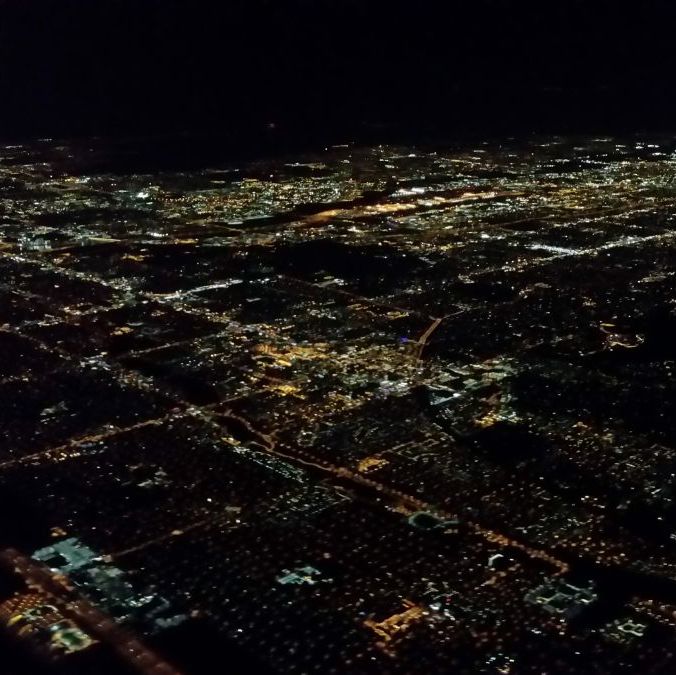
|
|
Las Vegas
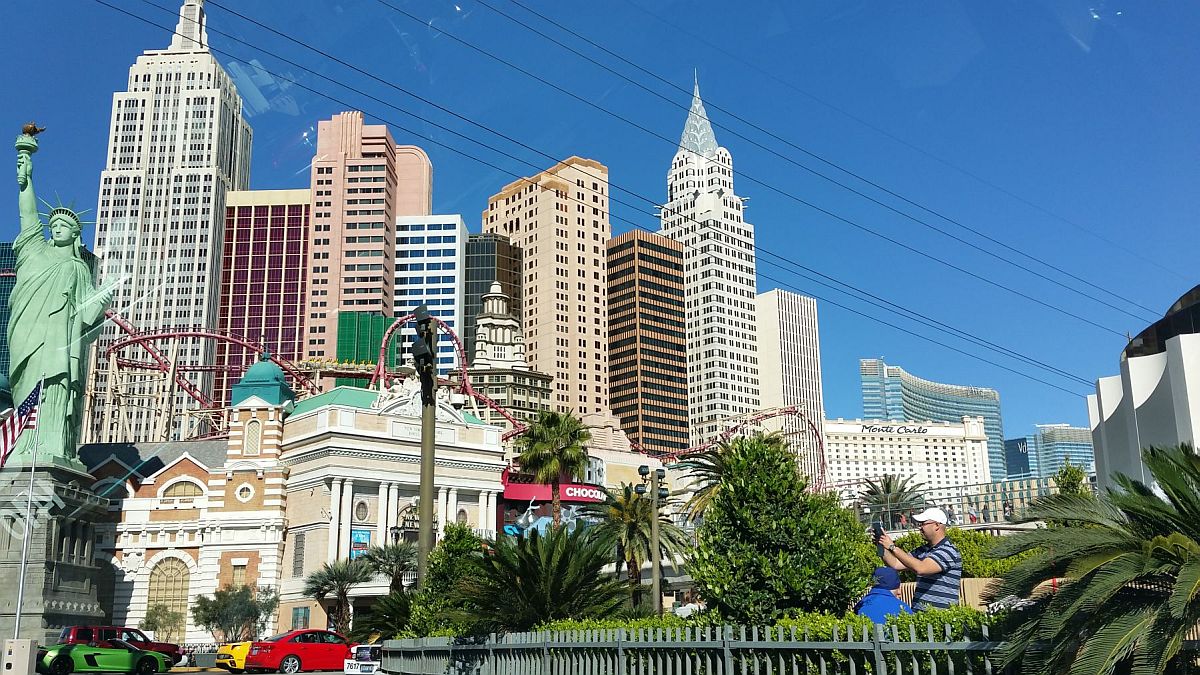
|
In Las Vegas we slept in a "Travellodge", apart from the two nights at Tom & Jennifer's respectively Brian's home that was the only night when
we did not sleep in the van. On Friday midmorning we fetched our "Escape Camper Van", bought some food, and left Las Vegas without visiting
a single gambling hall - iron discipline or simply just nerdy ;-). And the American routes and highways were not as slow as is their reputation, the
speed limit was usually either 65 or 75 miles; and since limits were also willingly overstepped a bit over there - by quite many - the traffic flow was
often slightly faster. It was all quite relaxed and without stress.
On the road to Phoenix !
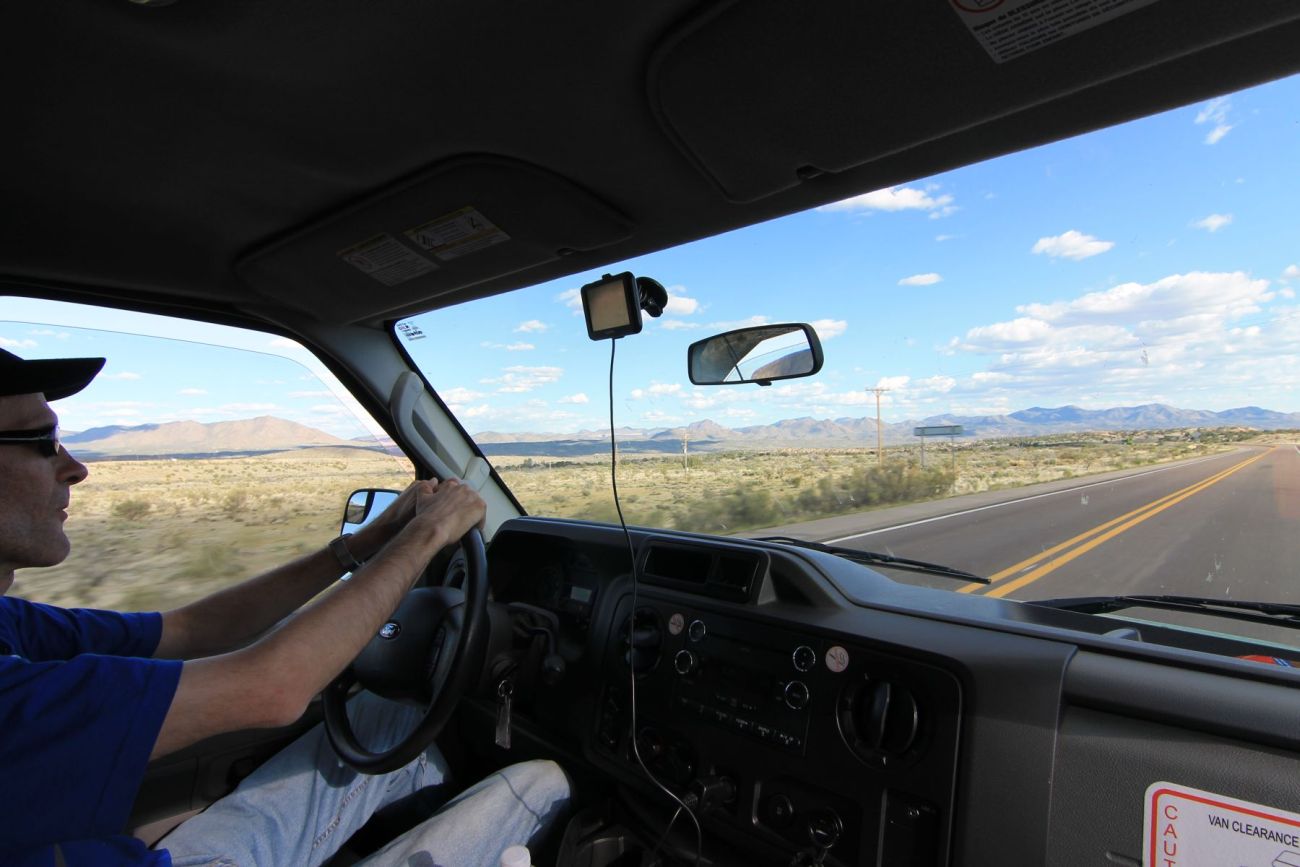
|
|
Joshua Trees near the street

|
Visiting Tom and Jennifer
On late Friday afternoon we arrived in Tempe, a suburb of Phoenix. After our short meeting the evening before we now met Tom and Jennifer again,
and now we stayed in their home for a night. They received us very friendly, and we were cared for in every respect: Culinary, astronomically, and also
with valuable tips concerning some of our goals, such as the Grand Canyon and Monument Valley. They have two cats and two dogs, and one of the two
big dogs seemed to like me a lot - I congratulated them on their nice home. And on the next forenoon we went shopping together, and loaded Tom's 10-inch
into the van. And then the provisional Goodbye, but only for one week till the Marathon. Thanks a bunch for everything !
Jennifer und Tom with their 10-inch Dobson
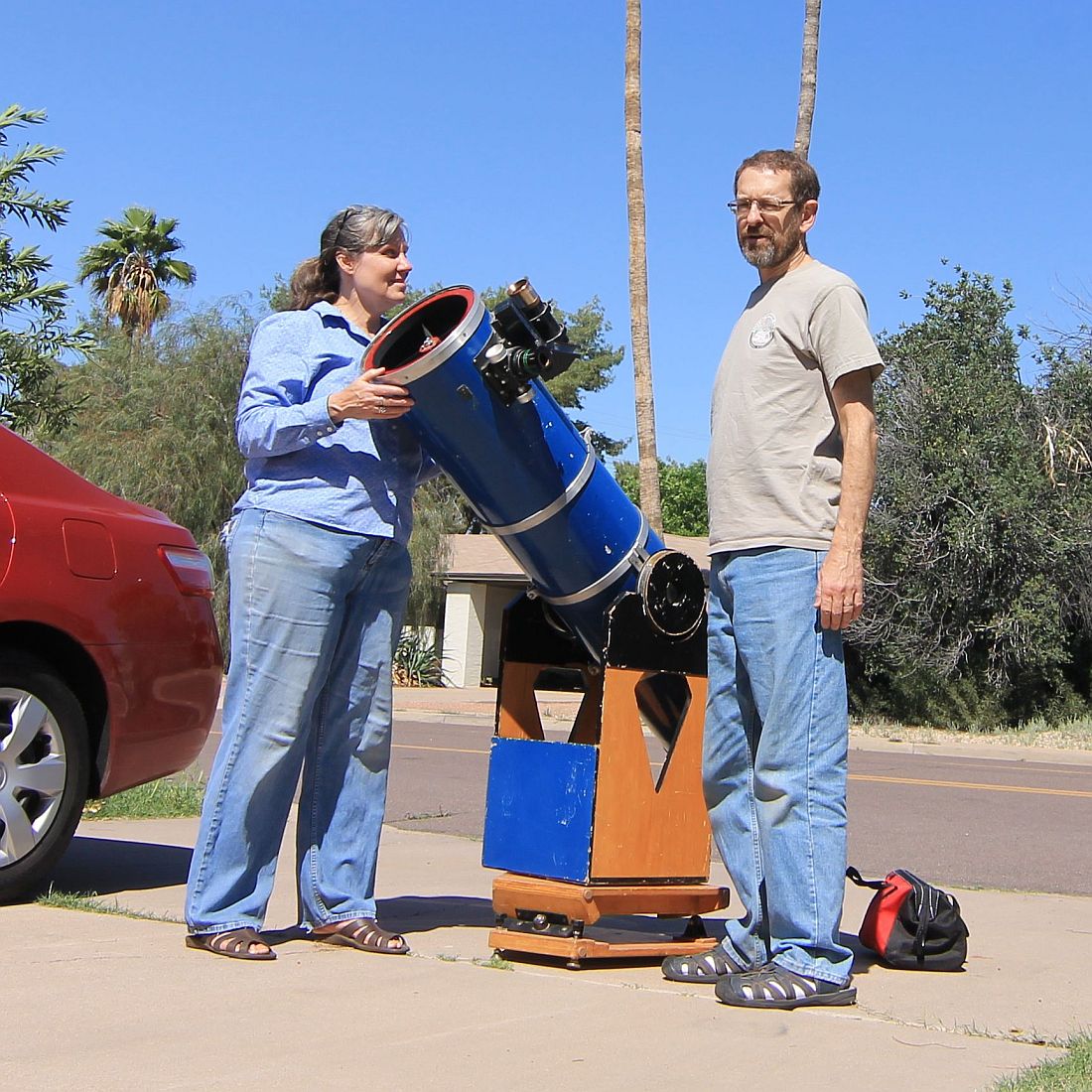
|
|
From left Jennifer, Tom, Ben and Julian
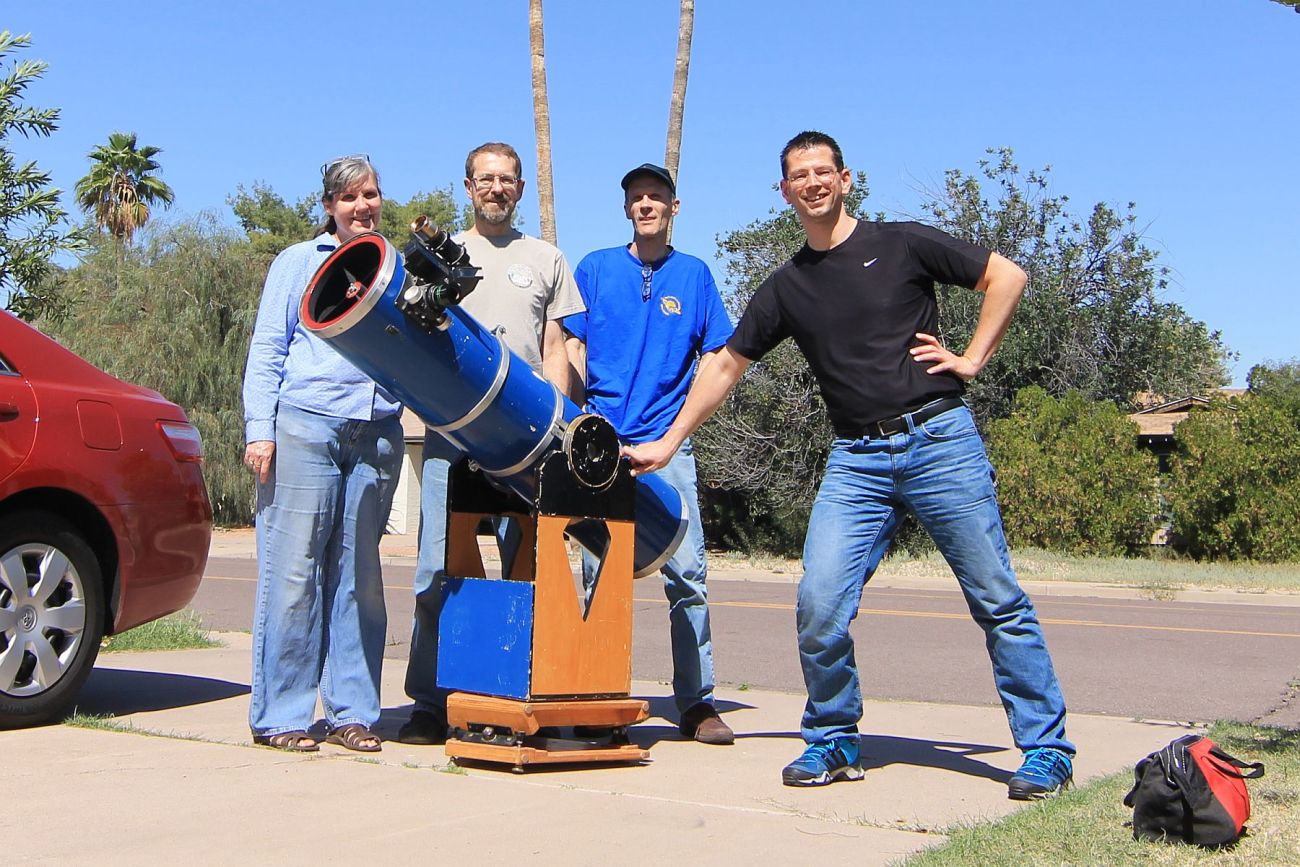
|
A visit to Mars Hill
Saturday, March 14: I had telephoned with Brian Skiff, and he expected us for the evening at Lowell Observatory in Flagstaff. It was already well into
dusk when we arrived on "Mars Hill", and Brian took us to his office. He shared his enthusiasm for his profession with us, and showed us some of his
current projects. Julian - who has a Ph.D. in physics - felt at home: "That's a real astronomer !" And after dinner in a restaurant in Flagstaff Brian invited
us on a trip to the Lowell Observatory's dark sky site, Anderson Mesa. Just for a short look, since there was much cirrus, and we still felt the Jetlag.
We planned to observe the next two nights up there, with a promising weather forecast.
On the road to Flagstaff
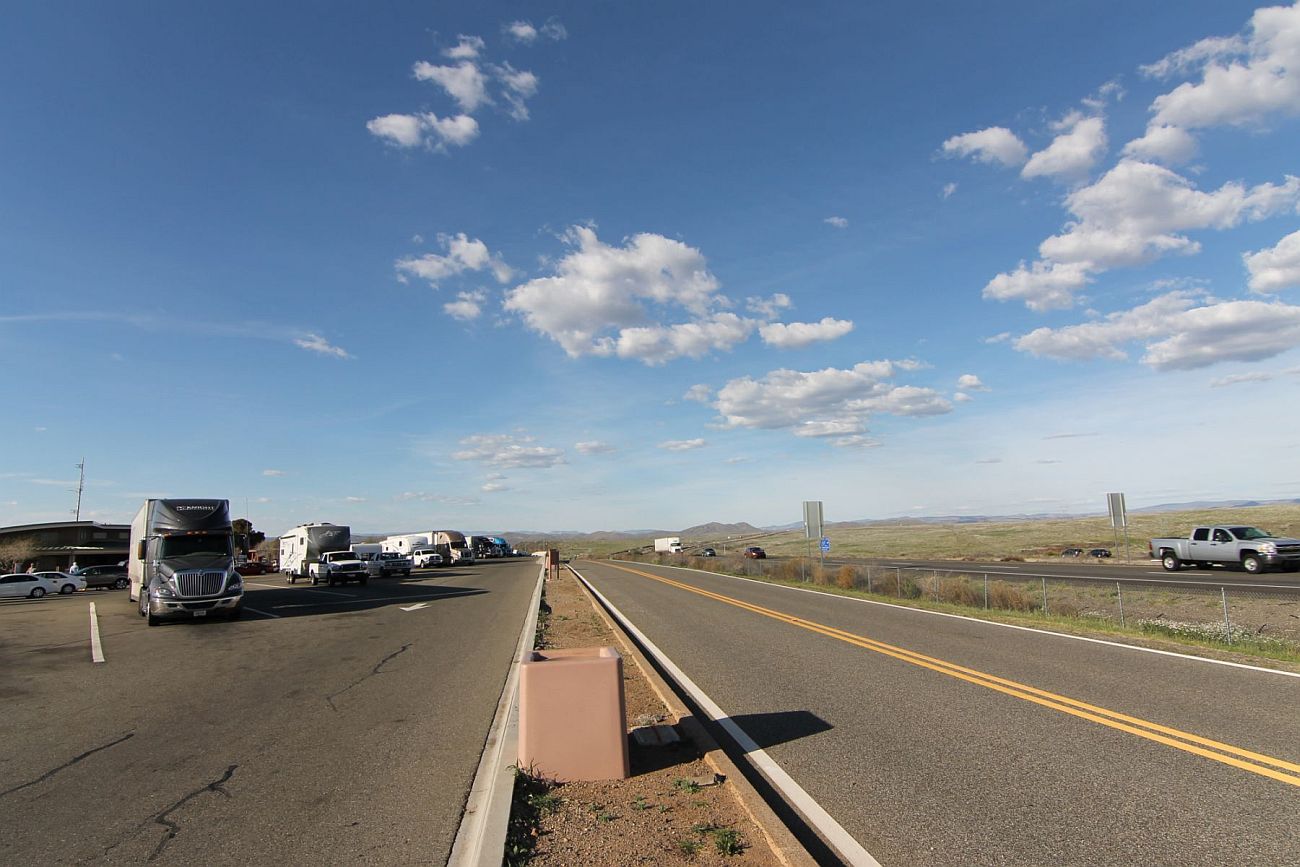
|
|
Anderson Mesa: Brian, Ben and Julian
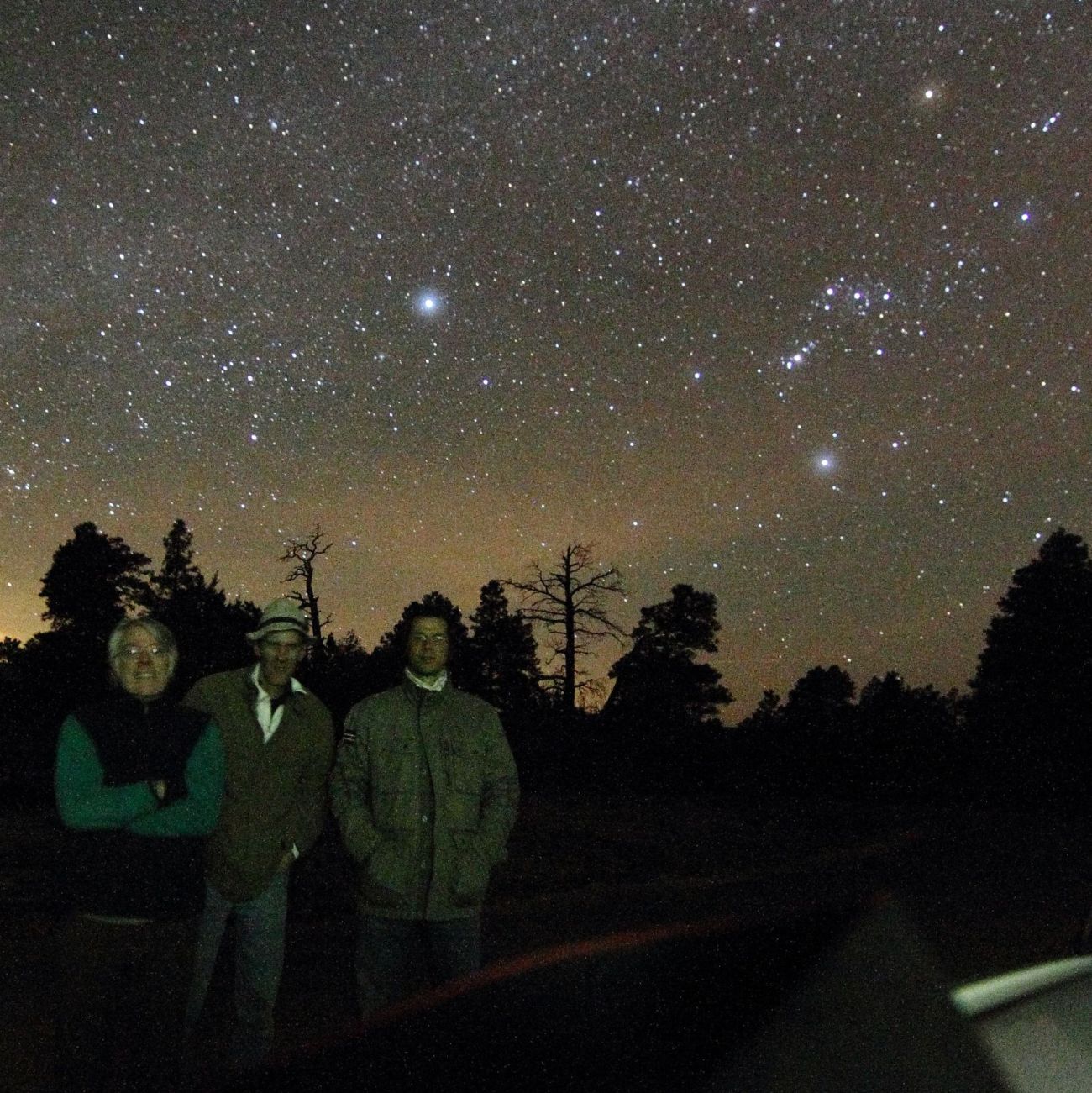
|
And after returning Brian offered us a room for sleeping, but since he had only one mattress Julian decided to stay in the van for the night. And then a
mishap happened - Julian:" When shortly leaving the van I accidentally let the door shut; the key was in the car. Just recently I had seen the television show
'Better Call Saul', and there Mike Ehrmantraut opened a car with the help of a string. I had a thin wire out of Brian Skiff's toolbox at my disposal. Modifying
the trick used in the TV show, and after two hours of fidgeting - when it eventually worked out - I could finally go to bed at 1:30 AM, frozen in my pyjama."
Brians home on Mars Hill
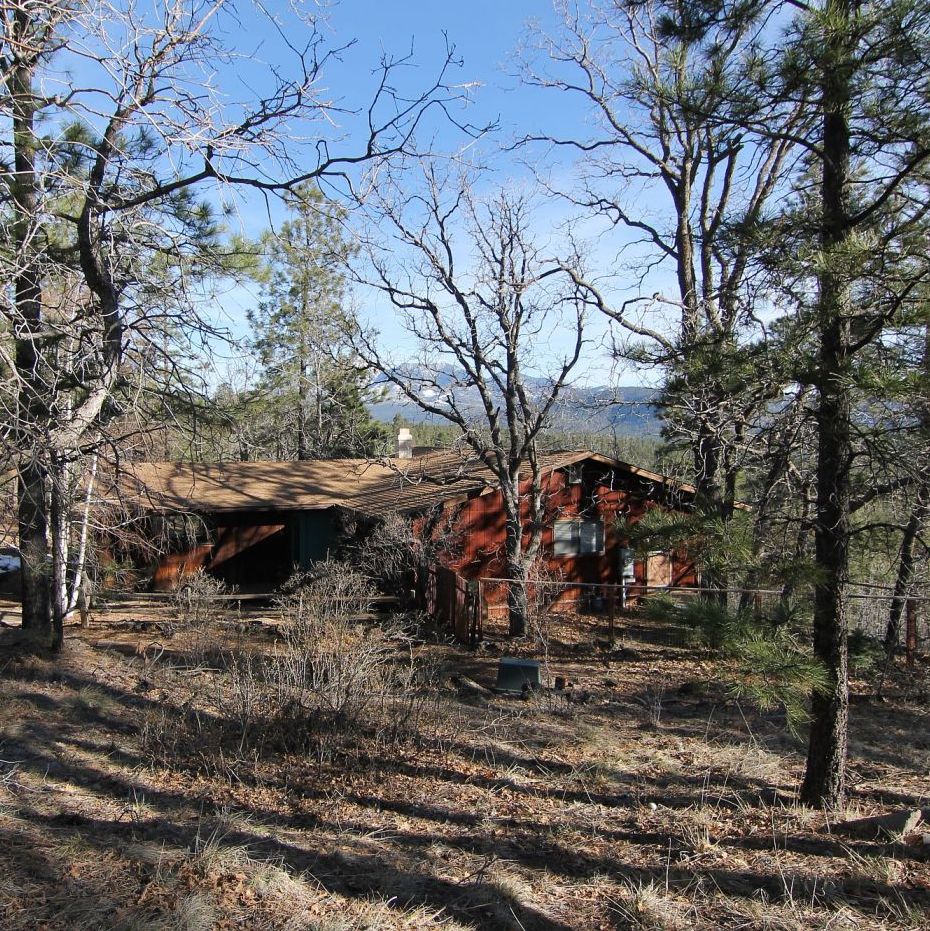
|
|
Lowell Observatory from above (Image: Julian)
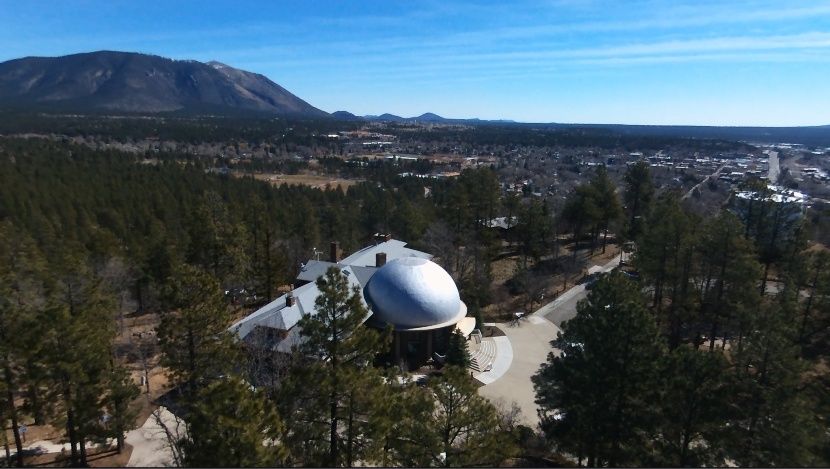
|
A guided tour through the Anderson Mesa Station
The Anderson Mesa Station is the dark-sky observing site of the Lowell Observatory, about 10 miles out of Flagstaff. Brian guided us through the area with
some bigger telescopes on Sunday forenoon. Julian was especially impressed by the "ancient" construction of the 72-inch. On this Wikipedia page you find
details about the telescopes.
The 72-inch Perkins telescope, built in 1931
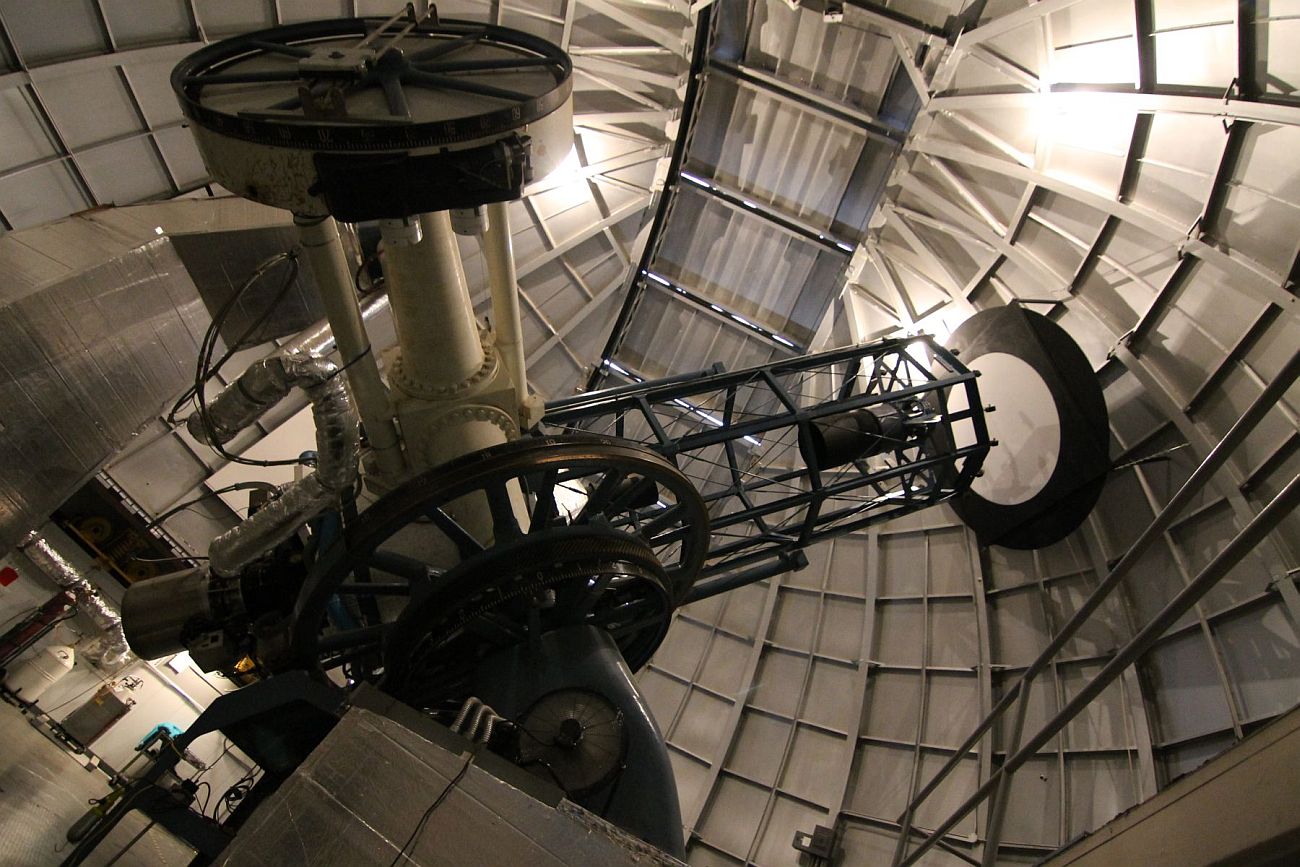
|
|
On the way to the John Hall telescope
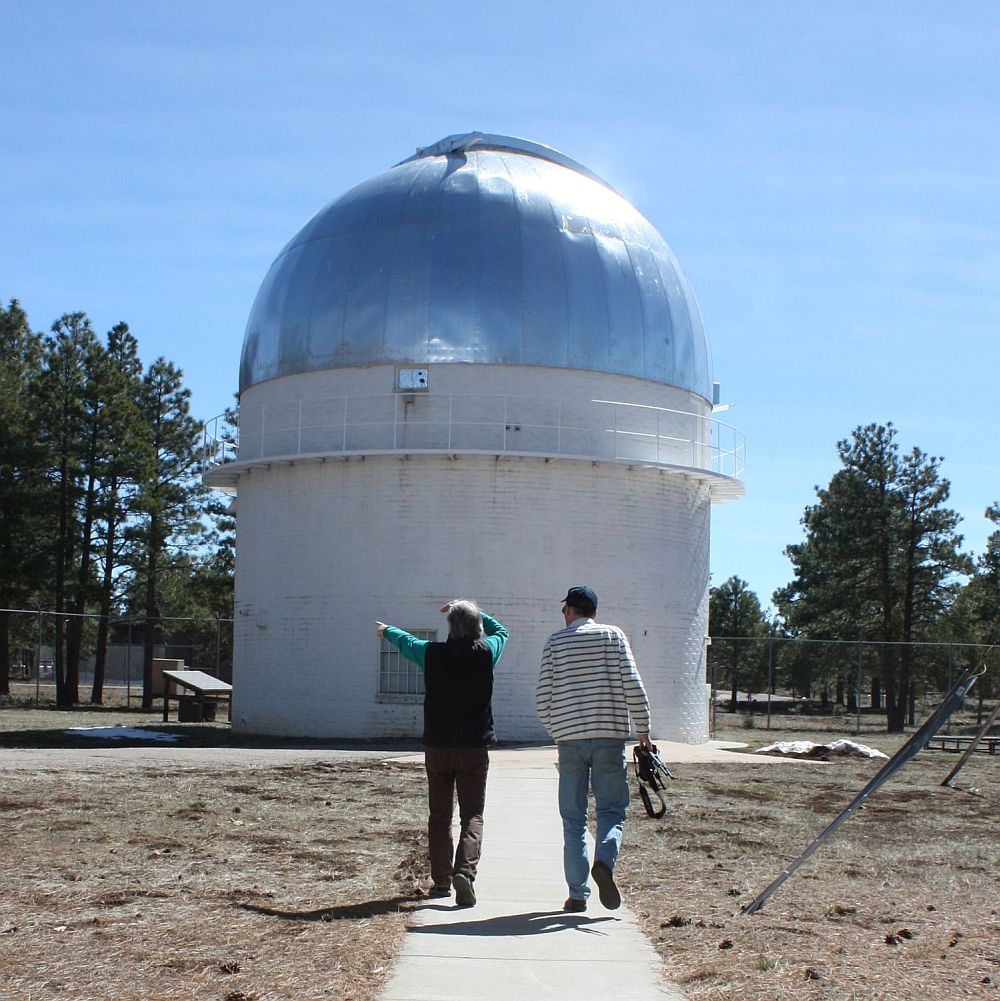
|
On the catwalk, Brian and Ben
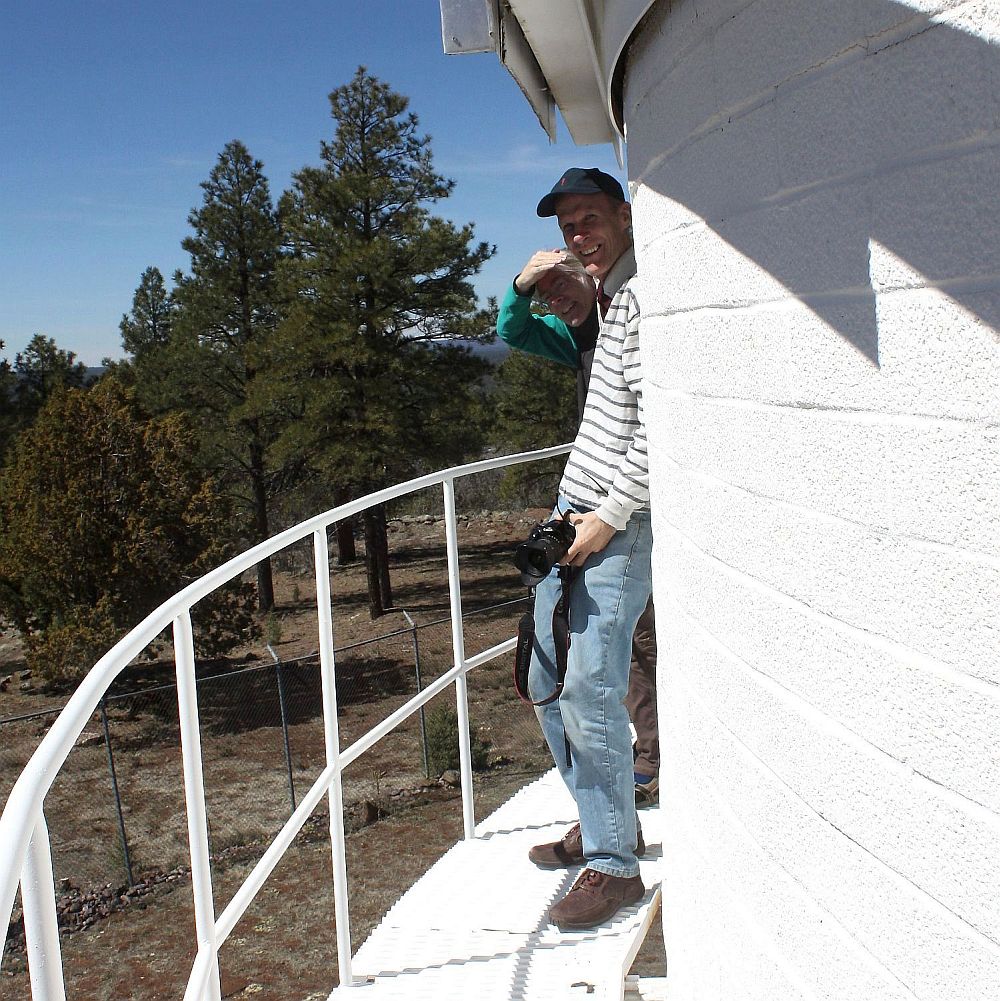
|
|
The "John Hall" 42-inch with Julian and Brian
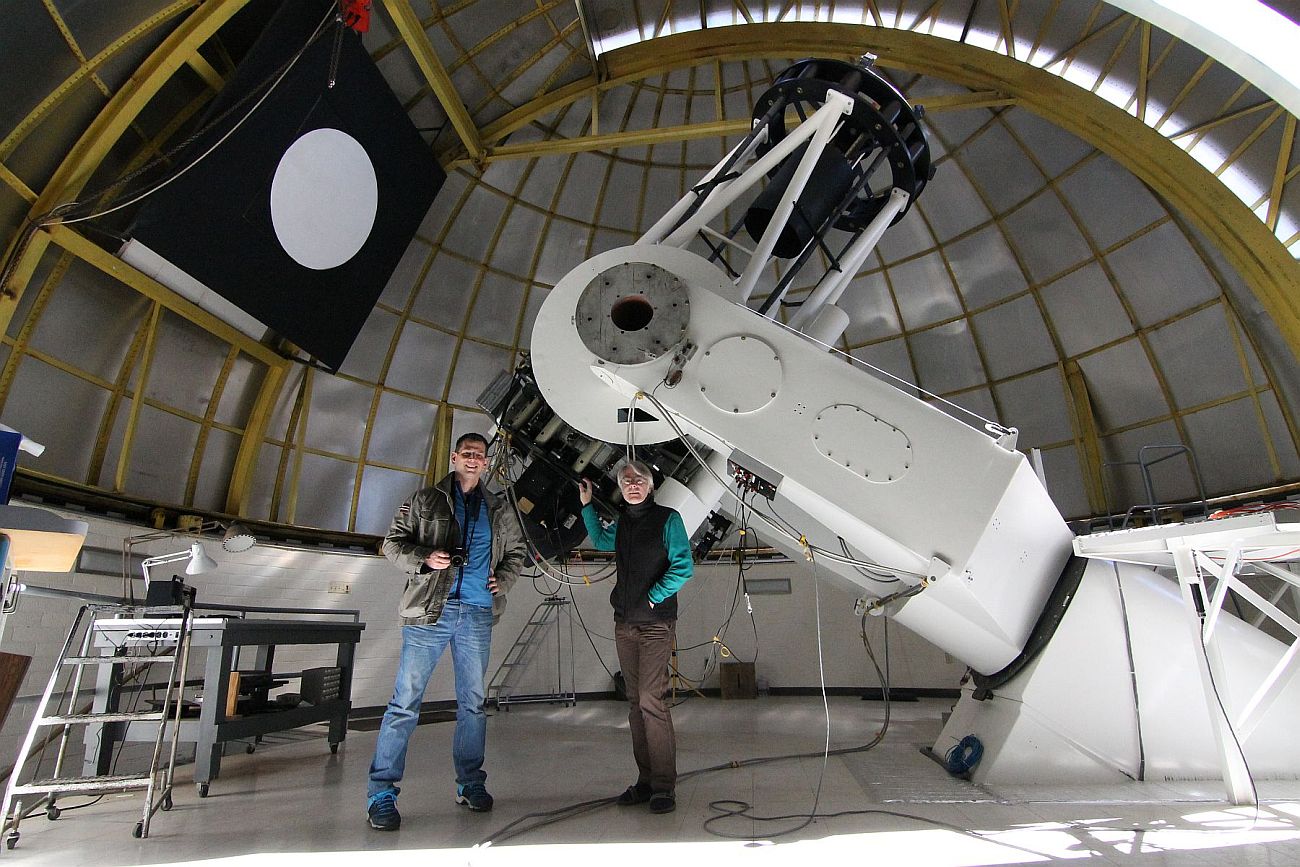
|
Farewell to Brian
Brian, thanks a lot again for your friendly invitation, and the very entertaining and light-hearted
hours that we spent together! And if you come over to Bavaria one day we are ready :)
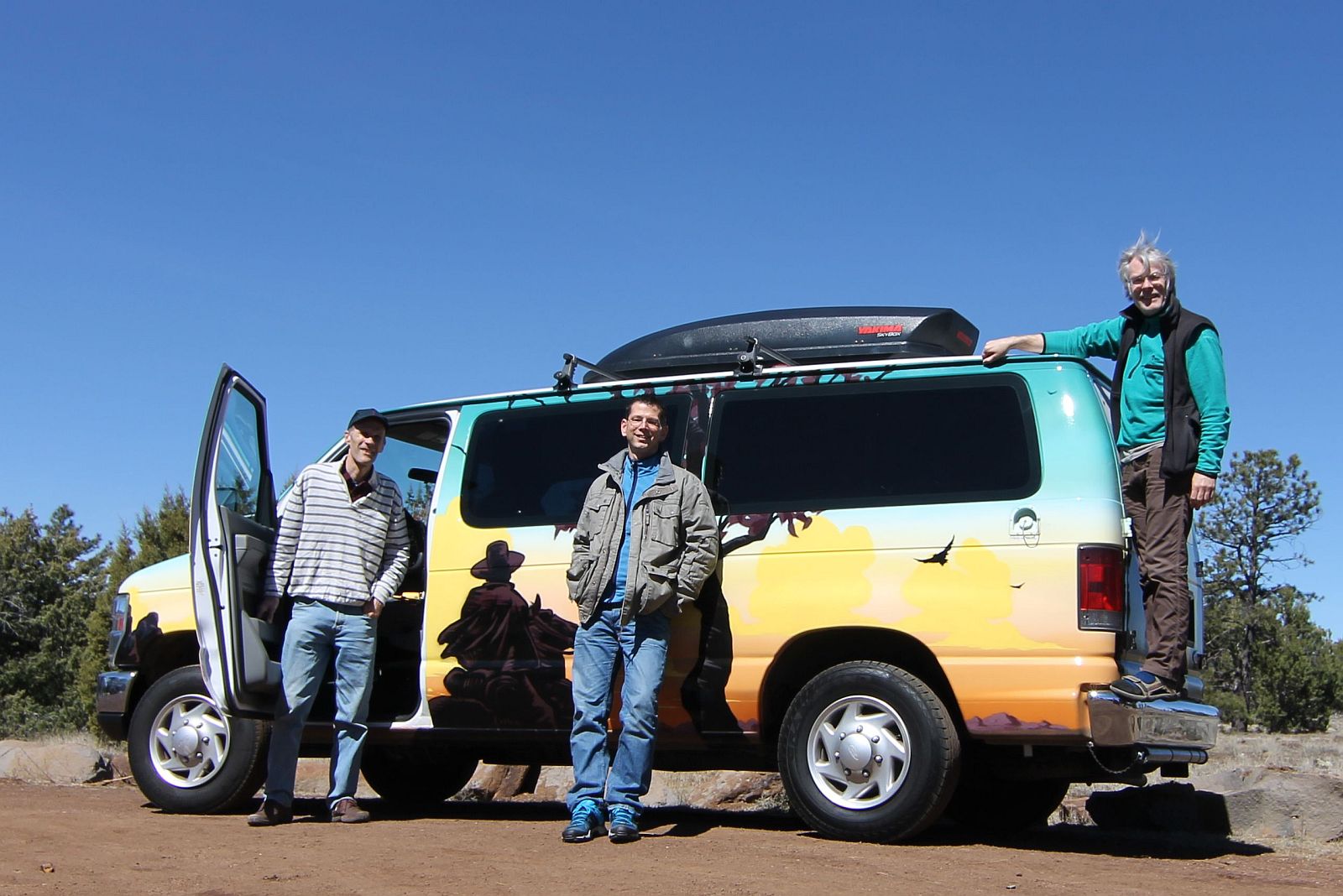
Two excellent nights on Anderson Mesa (alt. 2163 m)
Brian returned to Flagstaff, and we stayed with the intent to observe for two nights. The site has a declination of about 35° N, that's
about the same as Crete in Europe, or well a degree south of Gibraltar. The area with the extended pine forests is "National Forest",
meaning that you can camp and stay there as you like. The following two images are made by Julian's drone, above our site at the
last curve before the entrance to the telescope station.
The volcanic San Francisco Peaks (alt. 3850 m) in the background
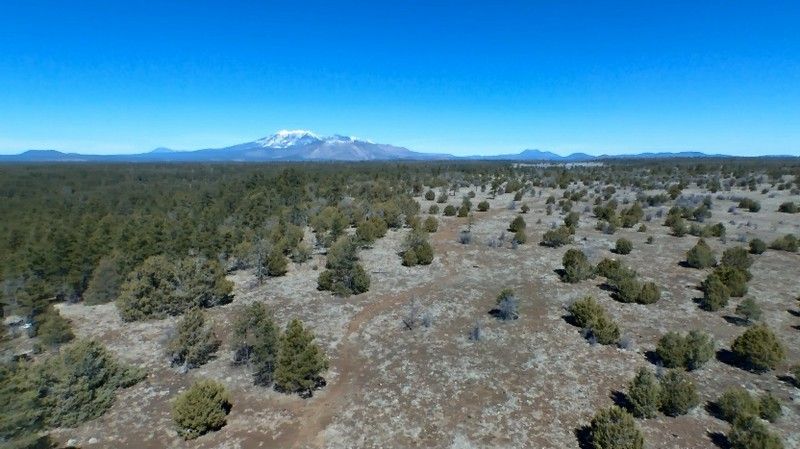
|
|
At right the 31-inch undergraduate research telescope

|
First night
The first night had some remnant clouds in the evening, and some horizontal lights, but they gradually disappeared, and also the Flagstaff lights were
increasingly less noticeable with the ongoing night. Julian and I did some practice for the coming Messier Marathon, in particular the critical evening
dusk objects M77 and especially M74 - which was still quite easy to detect for me here. Later Julian made a tour through the whole Virgo cluster, and
I once again looked at more difficult paths such as those to M14 or M107 - since I wanted to do the Marathon by memory without maps. And we met
two chance visitors here, two young people, Eva and Casey, whom we served several highlights in Tom's 10-inch; she had a background connected
to the Lowell Observatory.
Some remnant clouds in the evening
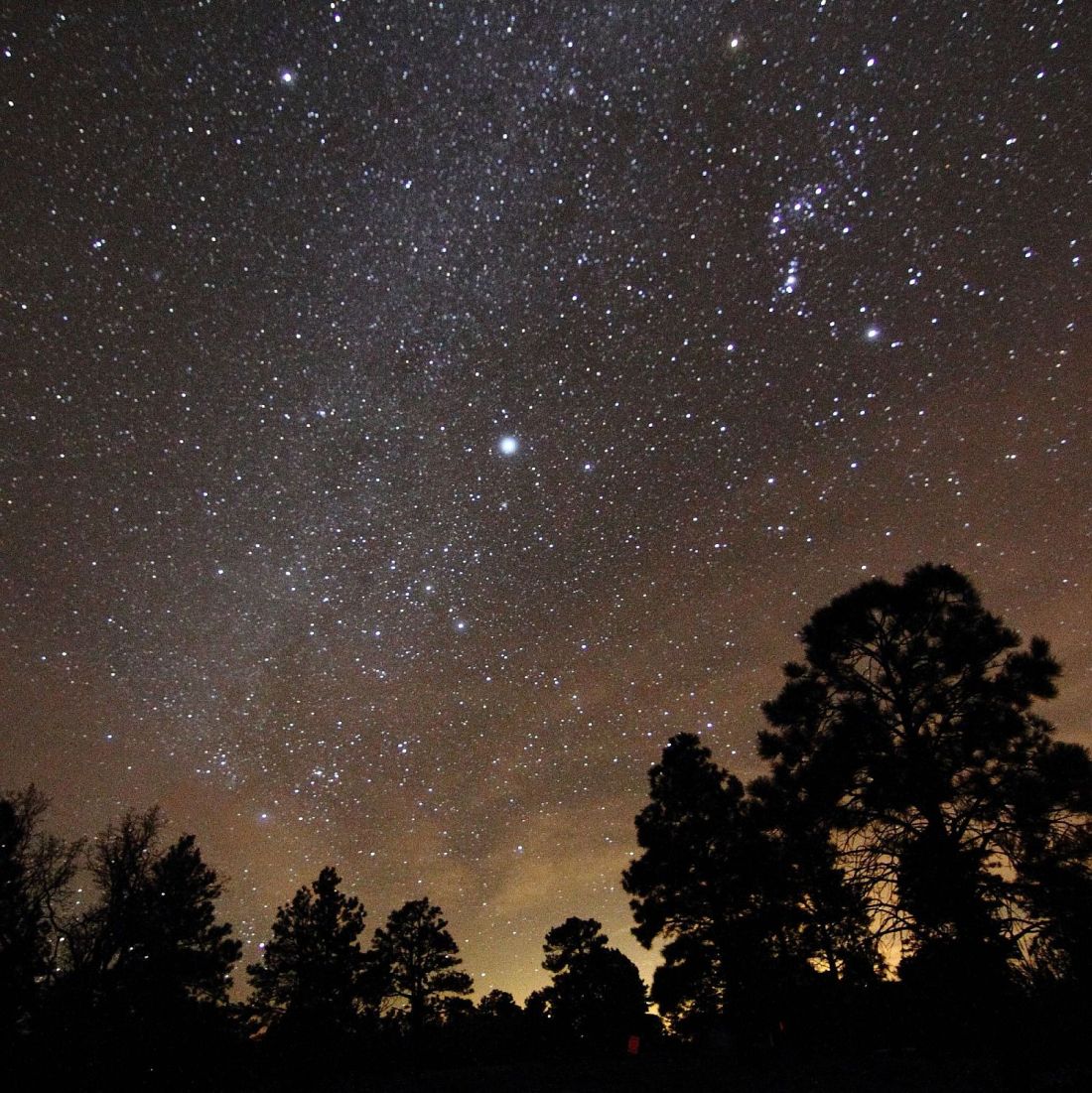
|
|
Guests in the night: f.l Casey, Eva and Julian
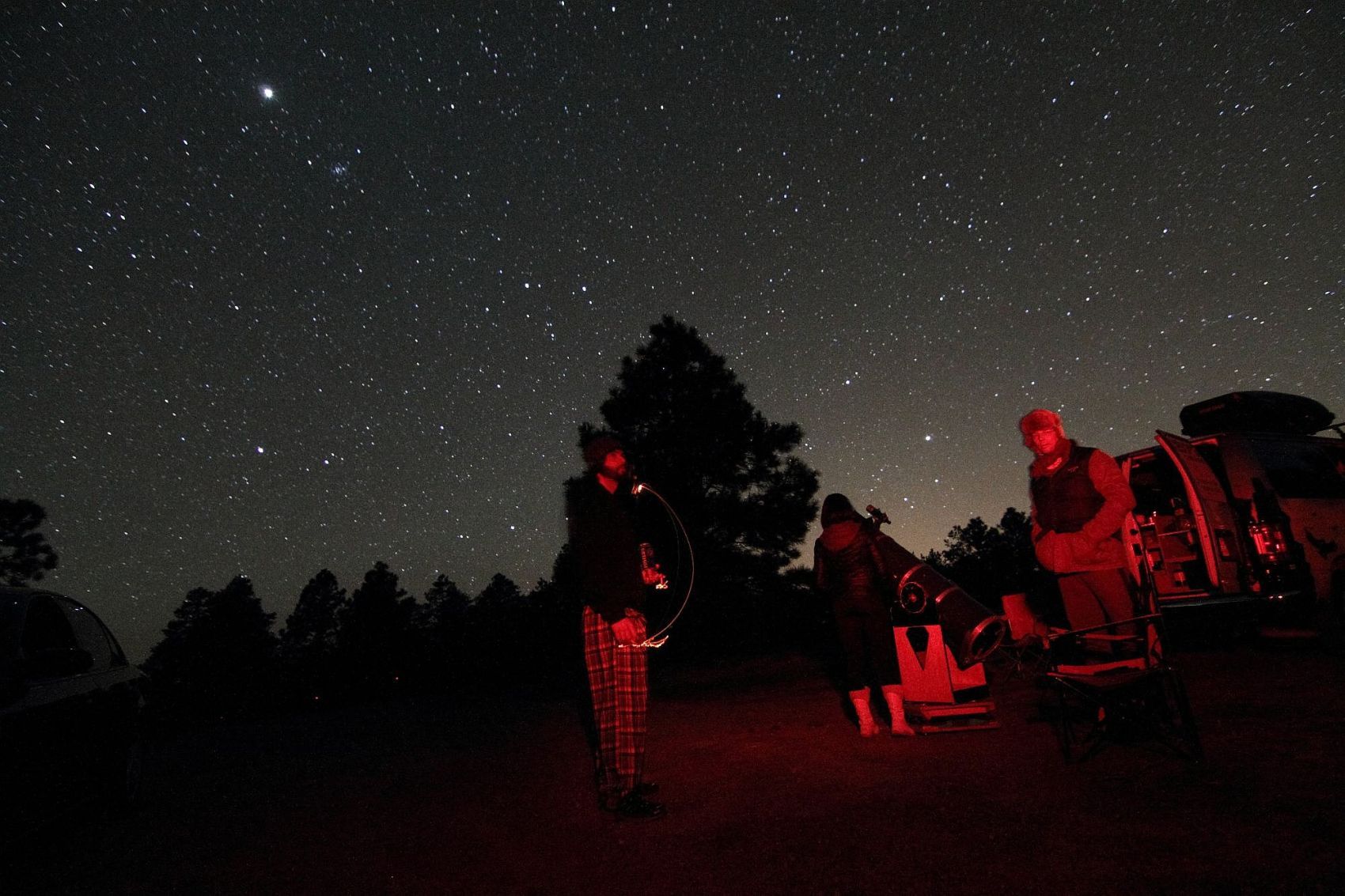
|
The sky was getting ever better. At about 1:00 AM my estimate for the visual limiting magnitude was about mag 7.3, based upon some comparison
stars in Bootes and Canes Venatici - while I could not discern a projected mag 7.4 star. In the morning, before moonrise, conditions seemed to look
even a bit better, but I did not verify fst again ; that was now a superb sky by all my European Alpine standards. Haley would say: "Giganacht", and
moreover totally dry and with a good seeing. The combination of excellent sky quality, the two 100 degree eyepieces and perhaps also Tom's good
mirror brought about that I had lots of "best ever" sights in a 10-inch: M42, M51, M64, M81/M82, M106, NGC 4449 or NGC 4565 were all stunning
given the aperture - they rather reminded me of views I know from a 13-inch (in good sky conditions). Also great were the OIII-affine Wolf Rayet
nebulae NGC 2359 and Sharpless 308.
And not to forget southern highlights like M104, M83 or NGC 5253, who are of course far higher positioned than at home. Moreover very fine
Milky Way objects like the bright nebulae M8, M20 or M17, or dark nebulae like B72 (Snake Nebula) with B68, and the well-known pair B86
and the open cluster NGC 6520. Or more southerly showpieces like the rich open cluster NGC 2477 (in a league with M37), the bright cluster
NGC 6231 or the "Packman-Galaxy" NGC 5128 (Centaurus A). Only Omega Centauri could not fully convince in a background gap near the
horizon - this largest of all globular clusters looked noticeably better at Hovatter Airfield (Messier Marathon site) in Tom' 15-inch.
We were not the only observers here. We sometimes heard the moving dome of the near 31-inch, the "National Undergraduate Research
Observatory" (NURO), which is used for practice by students.
Julian at Tom's 10-inch
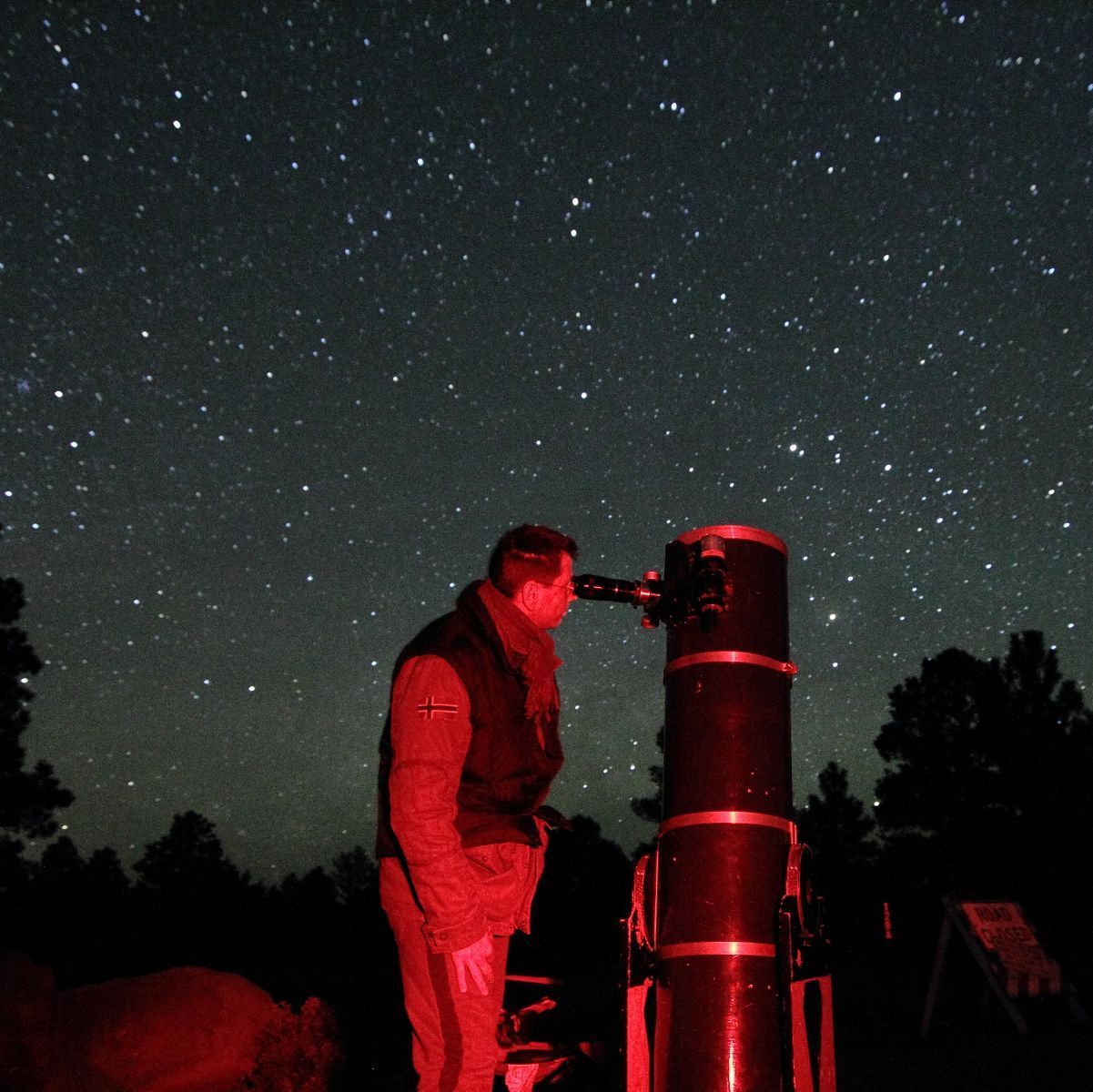
|
|
An excellent sky in the morning
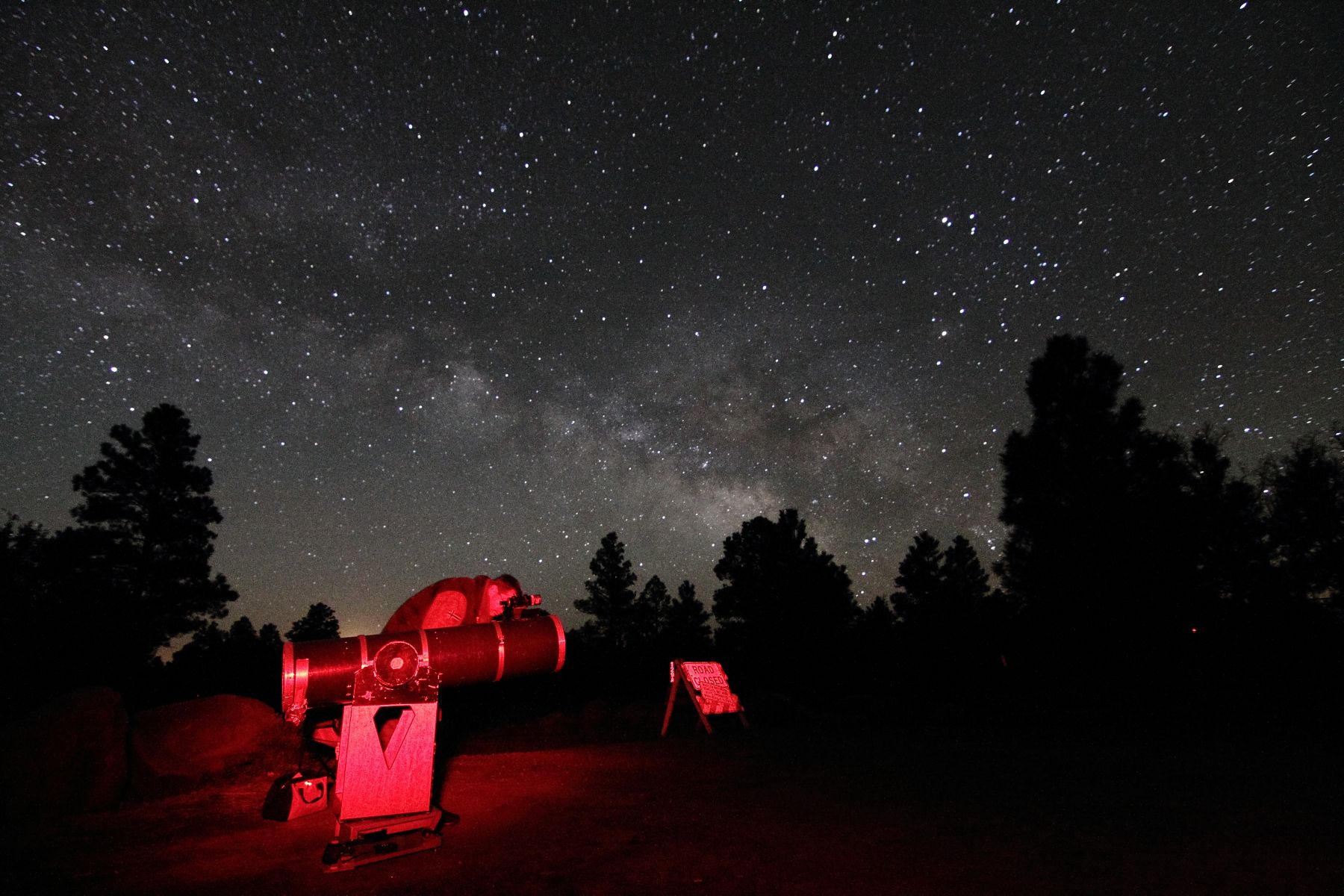
|
A nightly shadow
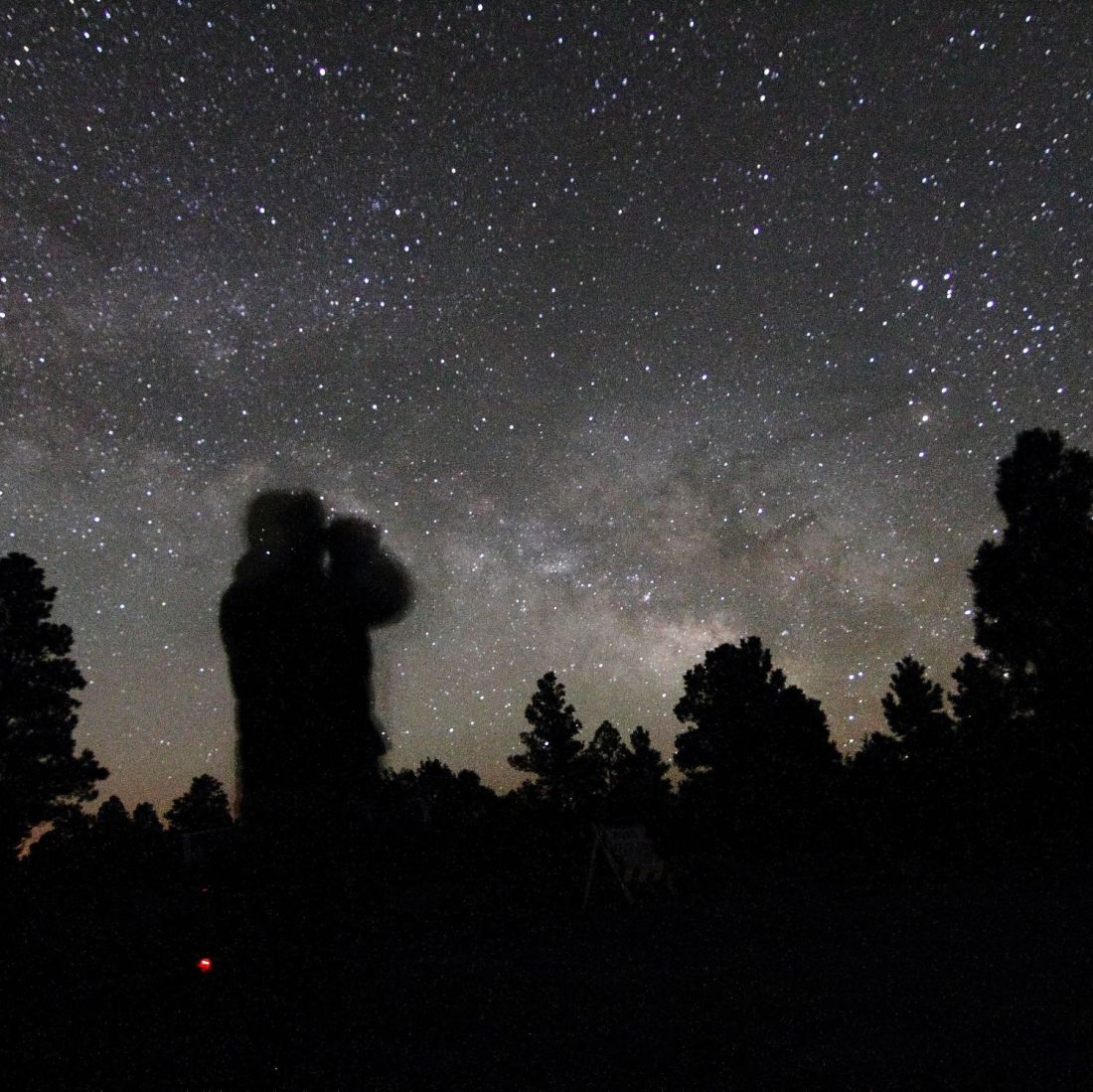
|
|
Moonrise
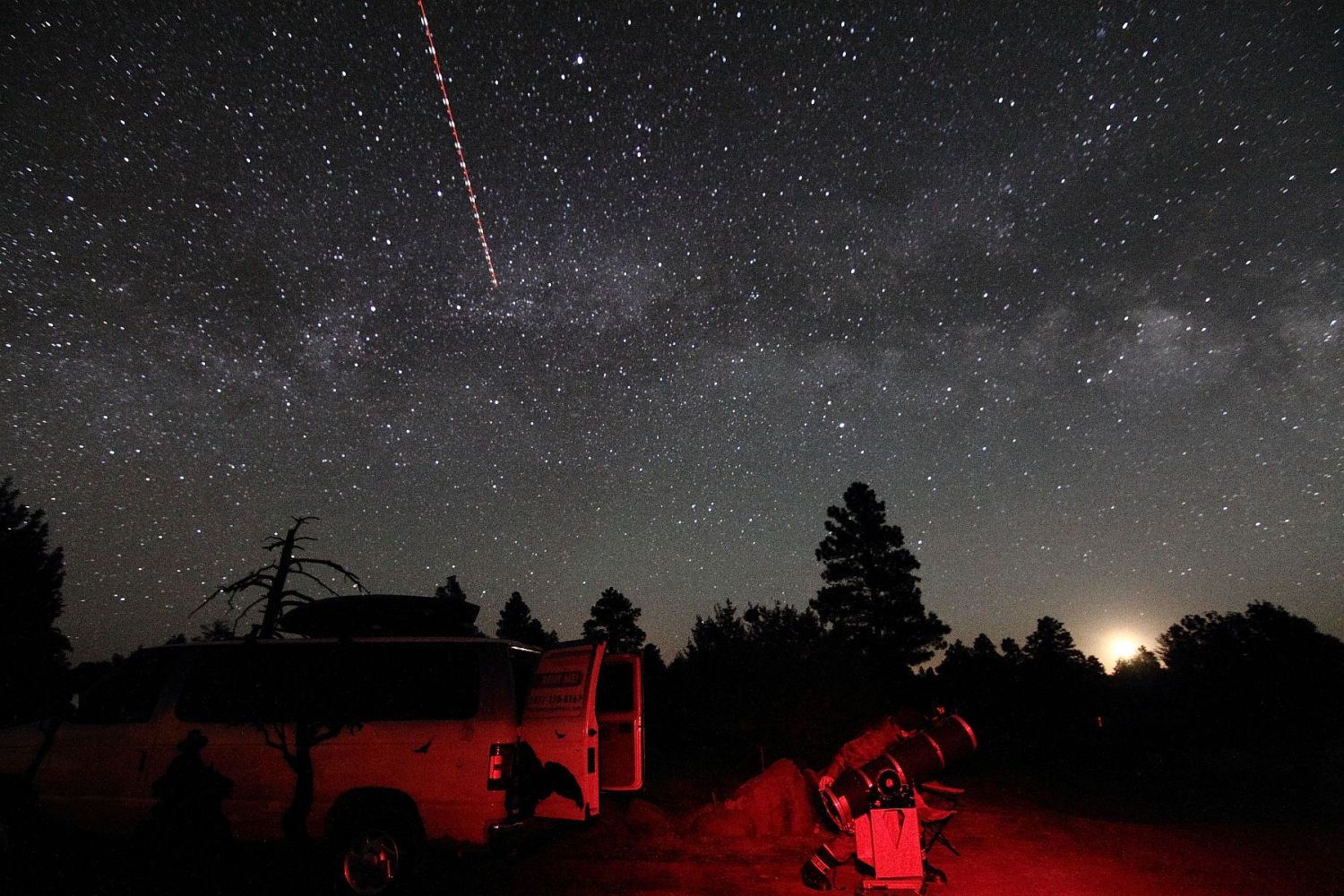
|
Sunrise
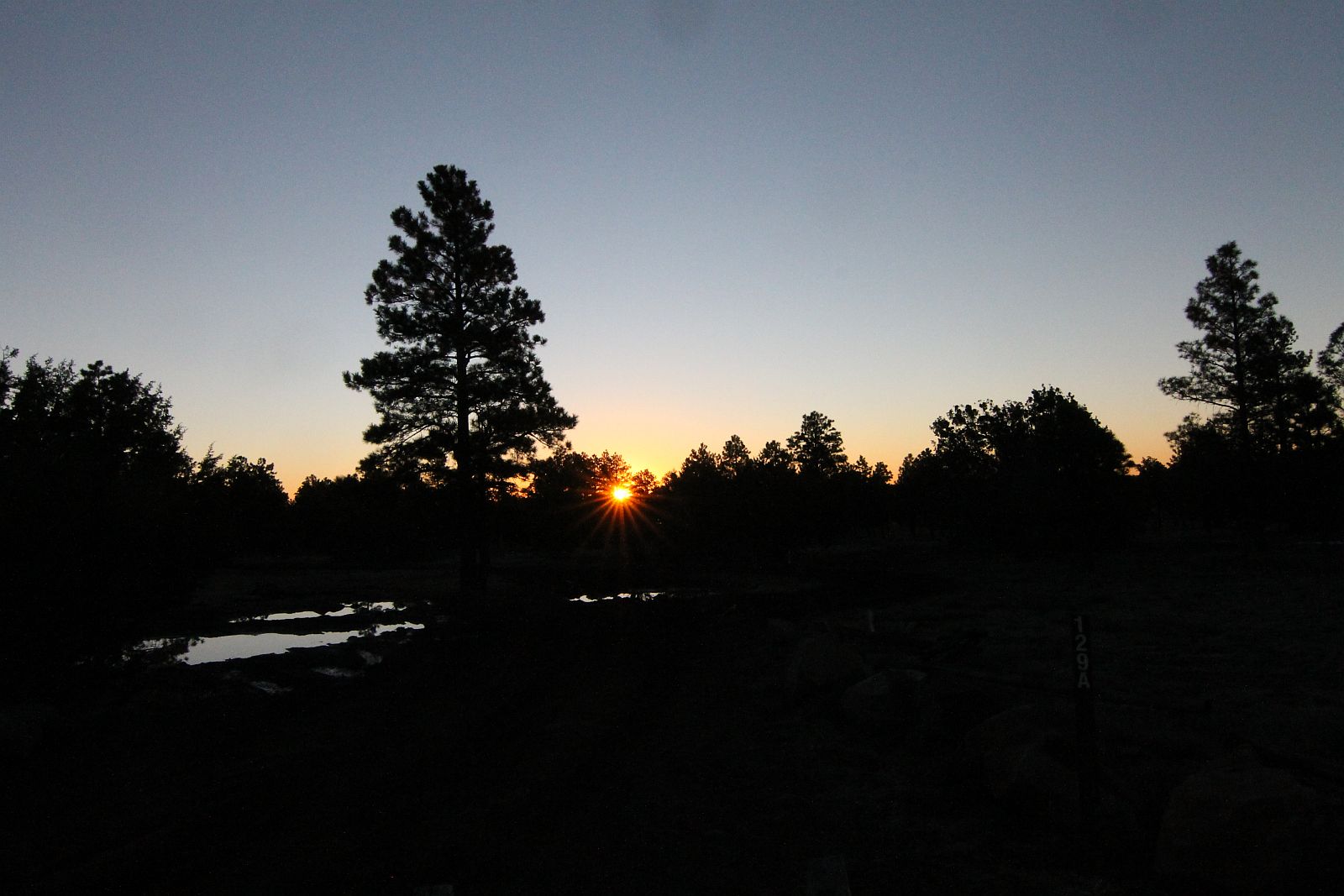
A day at the site
Monday, March 16: We spent the day mostly near to the car, without much activity; some remnants of the Jetlag and the preceding observing night had
reduced potential hiking ambitions to a minimum ;-). The van had an integrated cooker, plus ice box, and we had all food we needed taken along - so it
was fine to stay here all day long. Shortly after 12:00 AM at noon I made a phone call to our astronomy club (Munich Public Observatory). It was 8:00 PM
in Munich then, and our colleagues were just about to start the guided evening show.
Second night
After a mostly cloudless day the second night began with a blazing zodiacal light, which was favored by a combination of the
comparatively southern declination, a superb sky and the time around the beginning of spring, when the zodiac is at a steeper angle
relative to the horizon. Julian again practised for the Messier Marathon, what payed off in the end - but no spoiler alert here, it's all
on the Marathon page ;-). In between a group of young people came along with their car, who just had a week off ("Spring Break"),
and they had celebrated that accordingly with alcohol. All was quite easy after we had explained them what strange things we were
doing up here, and they also looked into the telescope. Afterwards a relaxed farewell, and we were among us again. From about
midnight on clouds were increasing, and we did not observe till moonrise this time.
A blazing zodiacal light in the second evening
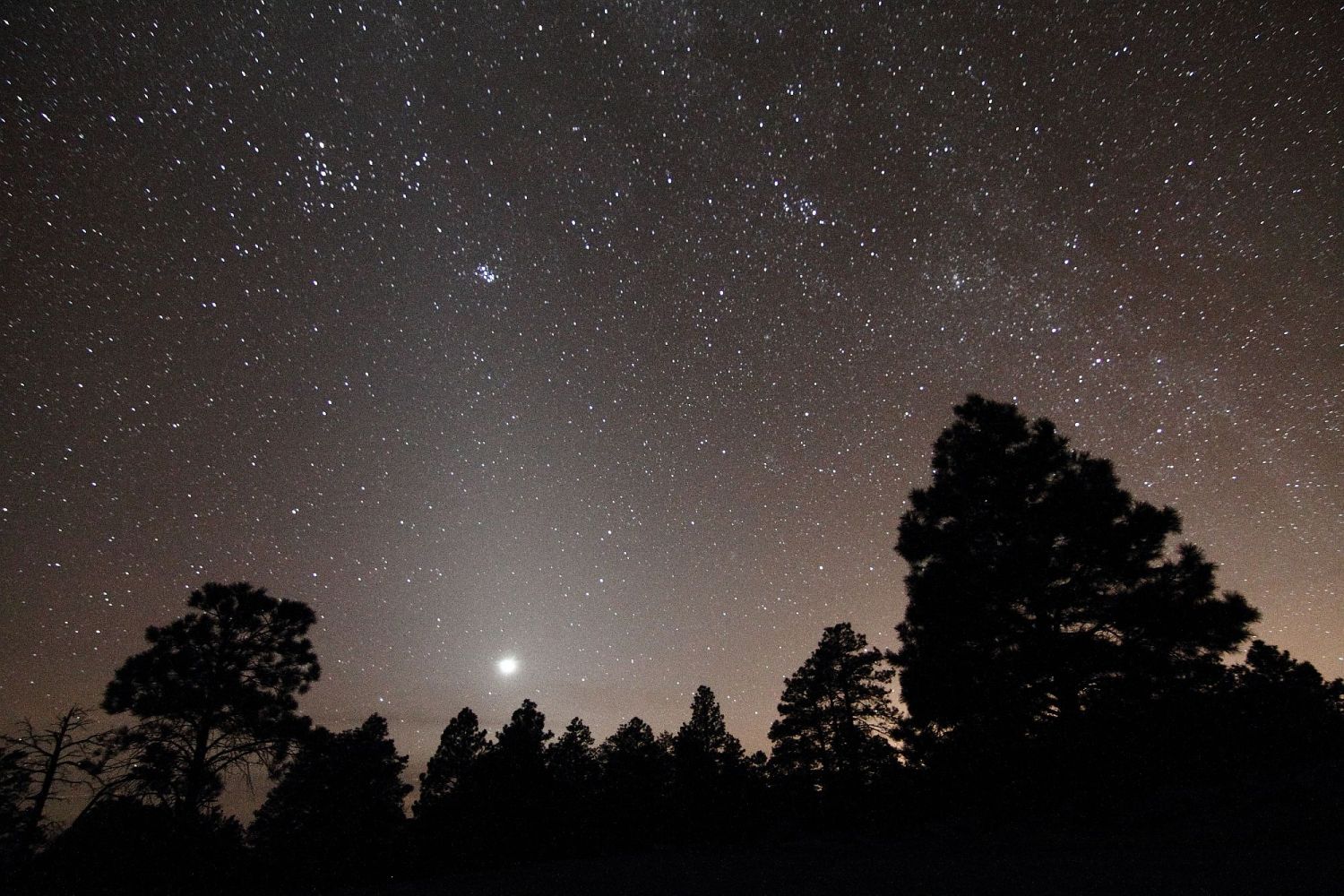
|
|
Big dipper and Coma star cluster
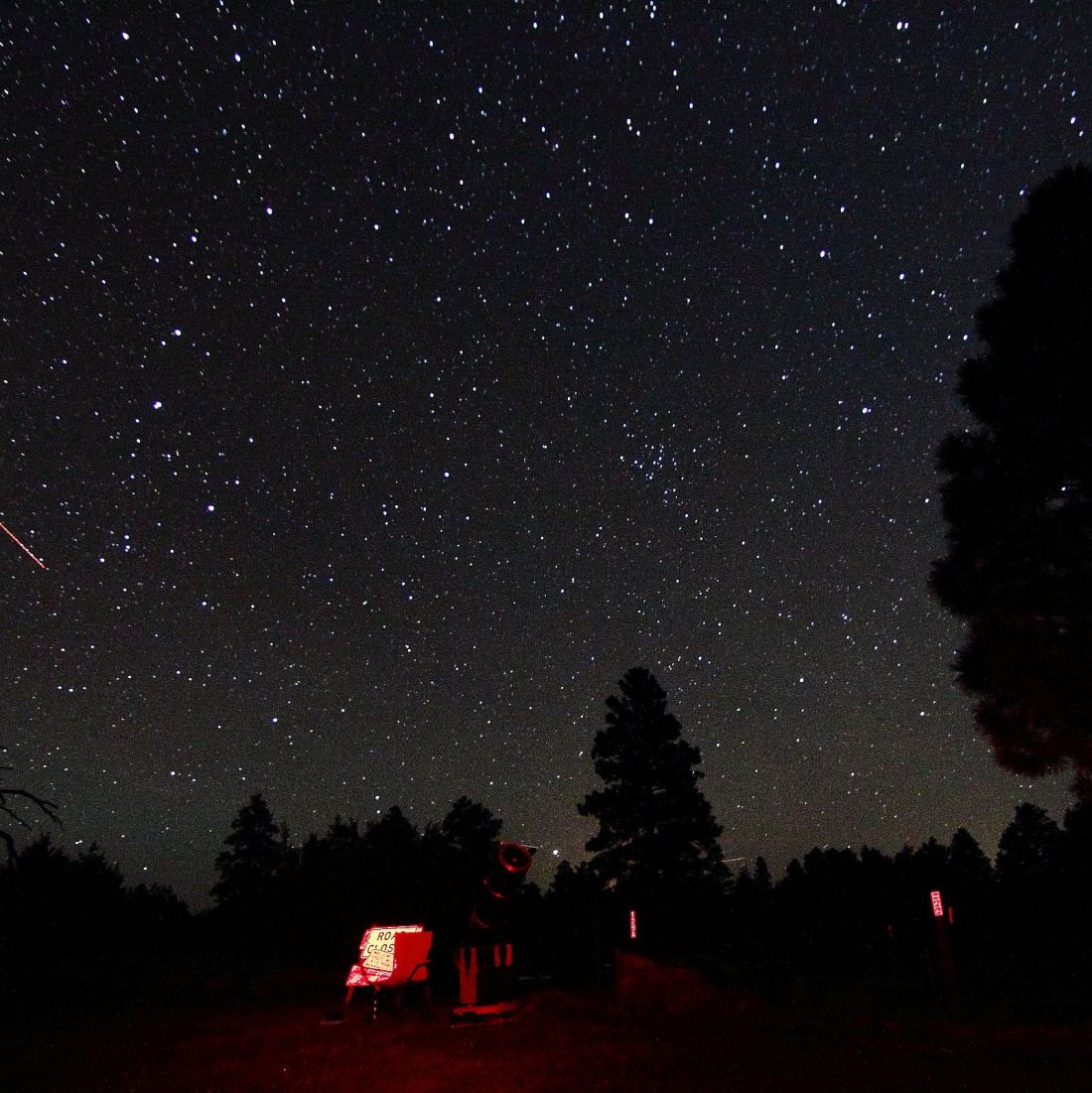
|
A bright winter Milky Way

|
|
Julian practises for the Messier Marathon
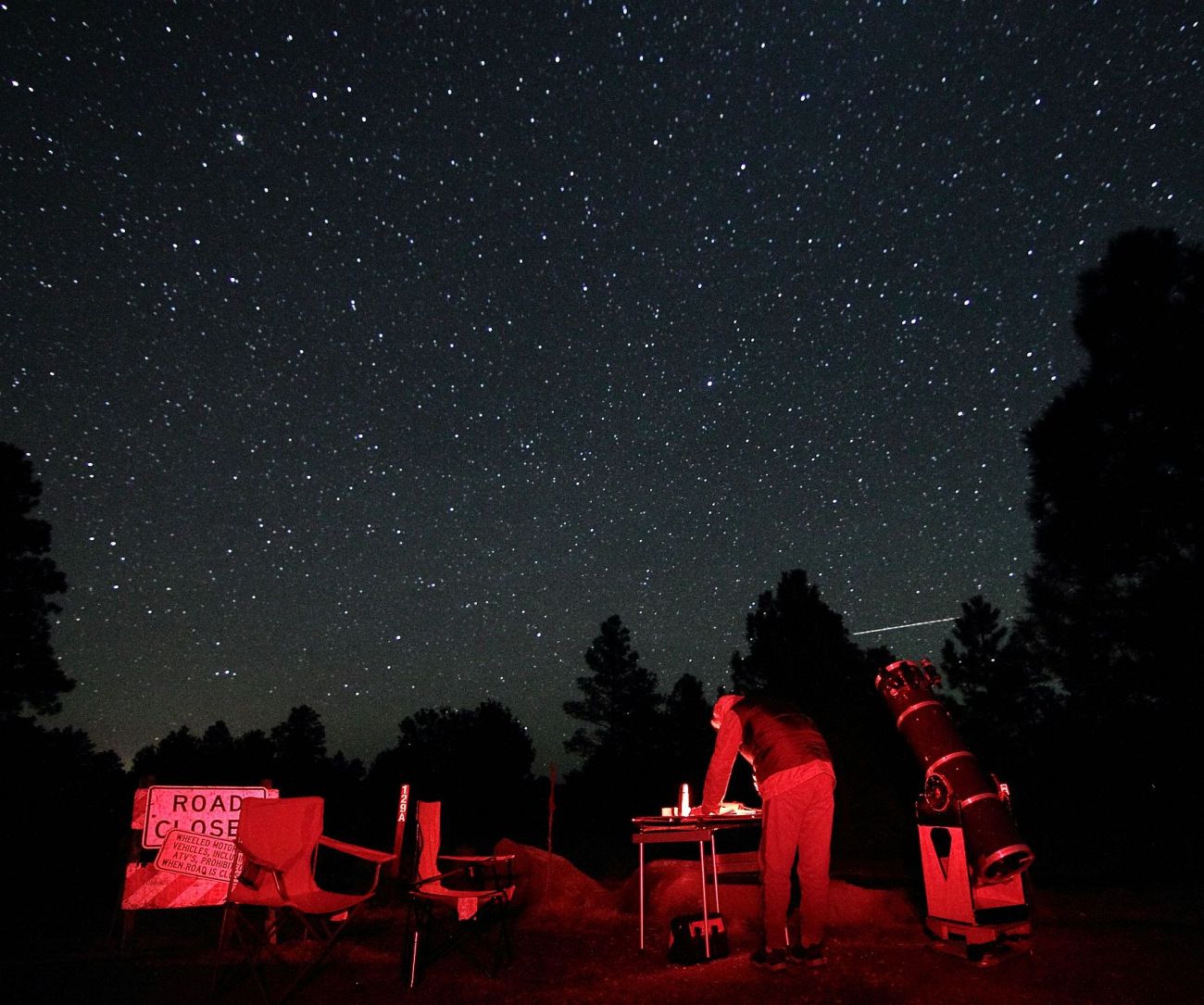
|

Back to USA page



